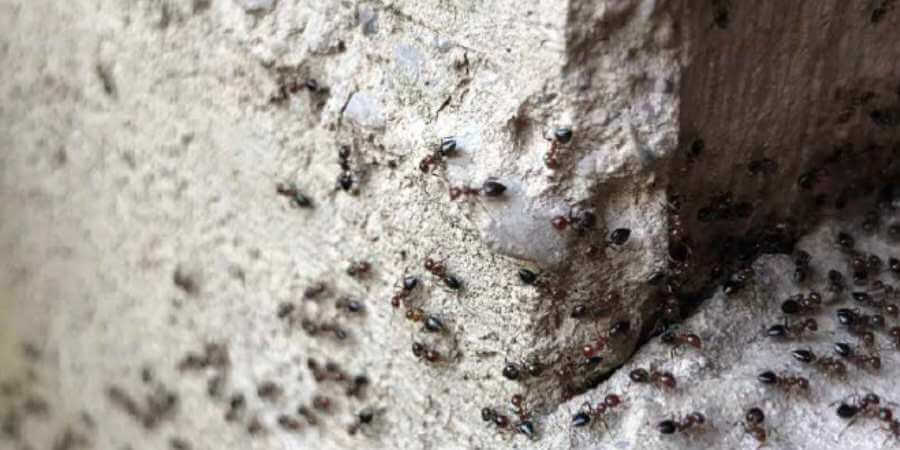
The garden ant, also known as the black ant, is found all over Europe.
A colony of ants can have 4,000-7,000 workers.
Male ants and newly produced virgin queens will mate in flight between June-September, particularly during the day.
Book pest control treatment for ants
We offer domestic and commercial pest control treatment for ants.
To book treatment:
- Check our pest control treatment prices.
- Call us to arrange a call-out or to book treatment.
Call 0300 303 8871 to book a pest control treatment
What do garden ants look like?
Worker ants, which are female, are around 3-5mm in length and have a glossy black colour.
Queen ants can reach 6-9mm in length and appear to have stripes of brown hair on their abdomens.
Male ants have wings and are around 3.5-4.5mm in length.
Where do garden ants live?
Ant nests are typically found in soil, but they may be under paving stones or concrete.
Ants rarely nest indoors, but they can be found in cavity walls and earthy sub-floors.
They can find the smallest of cracks in buildings. If they locate a source of food, which is often sugary, they'll communicate this with other ants using a scent trail to lead them to the building.
Are garden ants a hazard to my health?
Garden ants are not regarded as a significant risk to people's health.
However, they can be a nuisance if they're found in the home or on the patio.
How to control or treat garden ants
To control or treat garden ants:
- Remove their food source. Make sure all sugary foodstuffs are kept in sealed containers and that all food and drink spills are cleared up immediately.
- Follow the trail of a worker ant to find its nest.
- Gel baits can be used to lure a worker ant, which will take it back to the nest for the queen to feed on. Baits should not be used alongside any residual sprays or powder.
- Place the gel baits where the ants forage, in and around nest entrances, next to ant trails, and in cracks and crevices.
- Alternatively, you can use residual insecticidal treatments in and around the nest.
- You can also create barriers of insecticide around strategic points of your property to prevent worker ants from gaining access.

